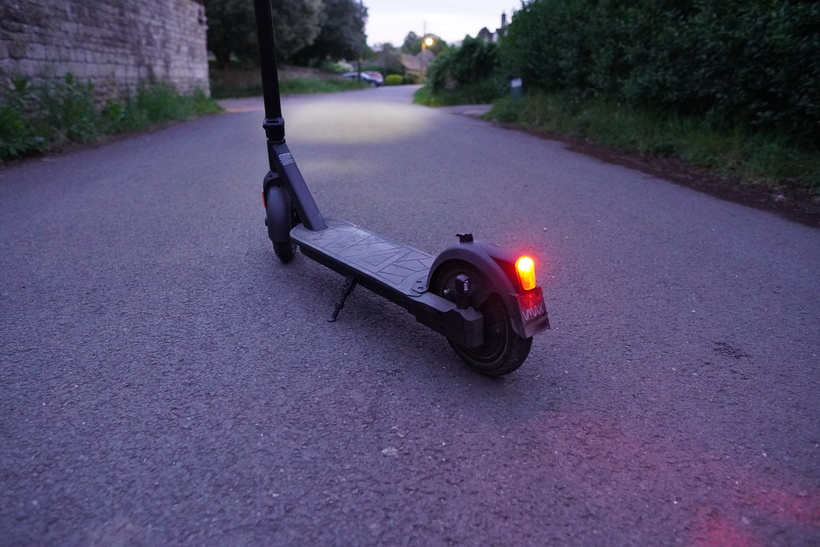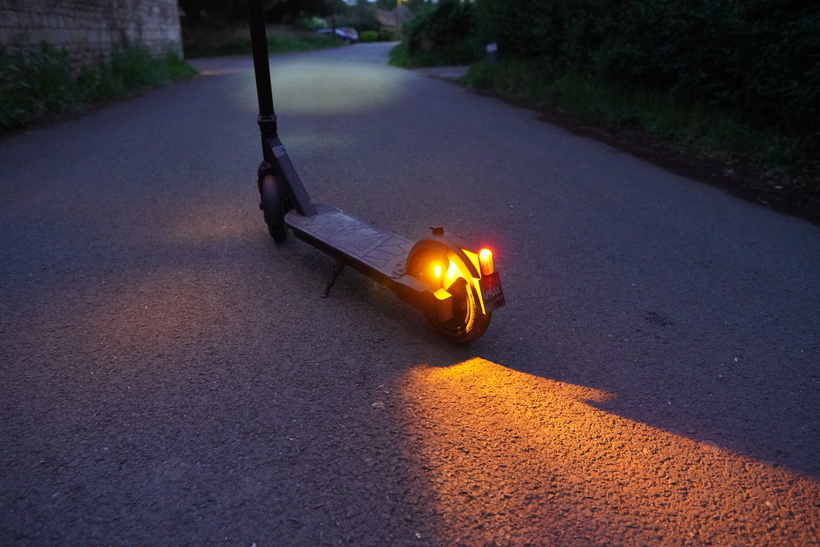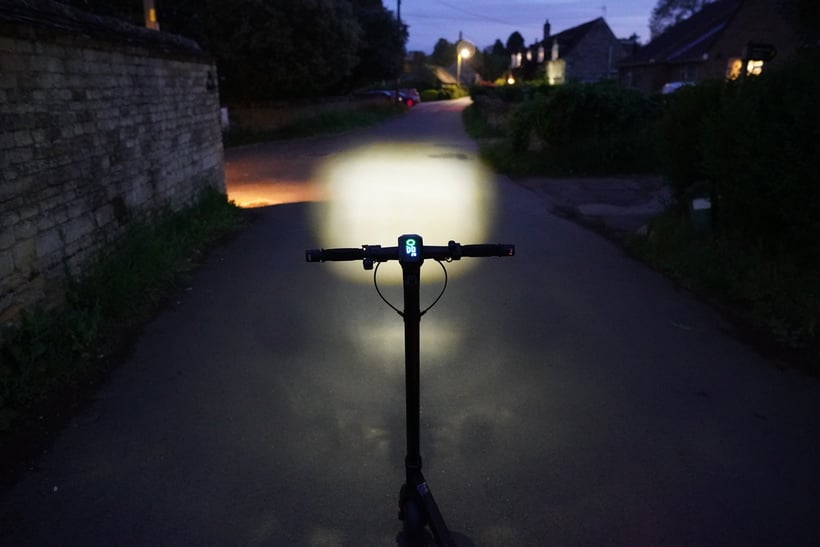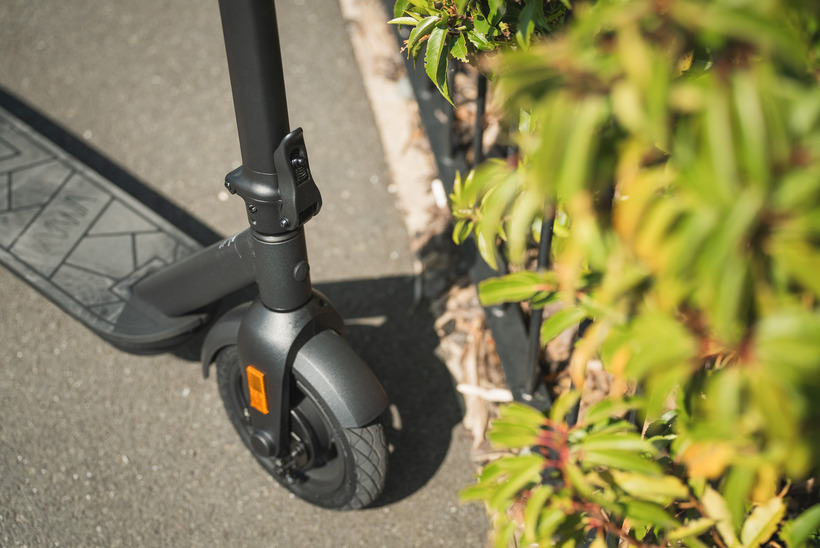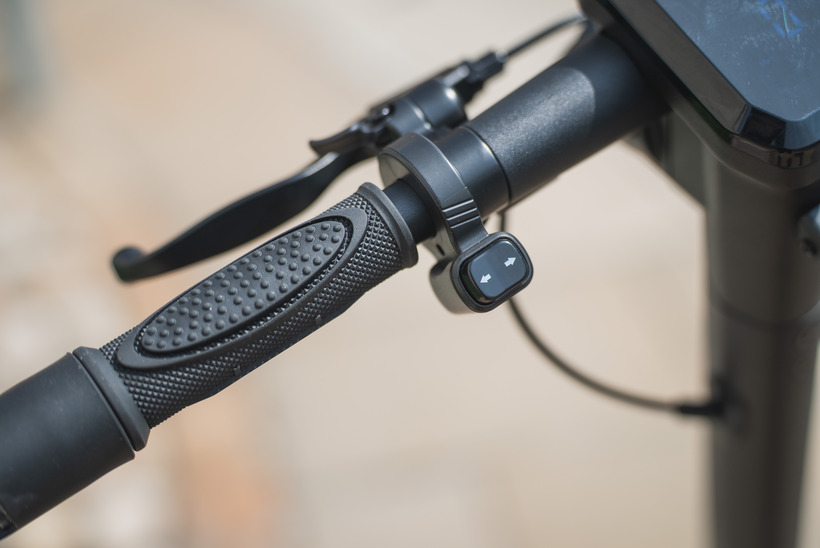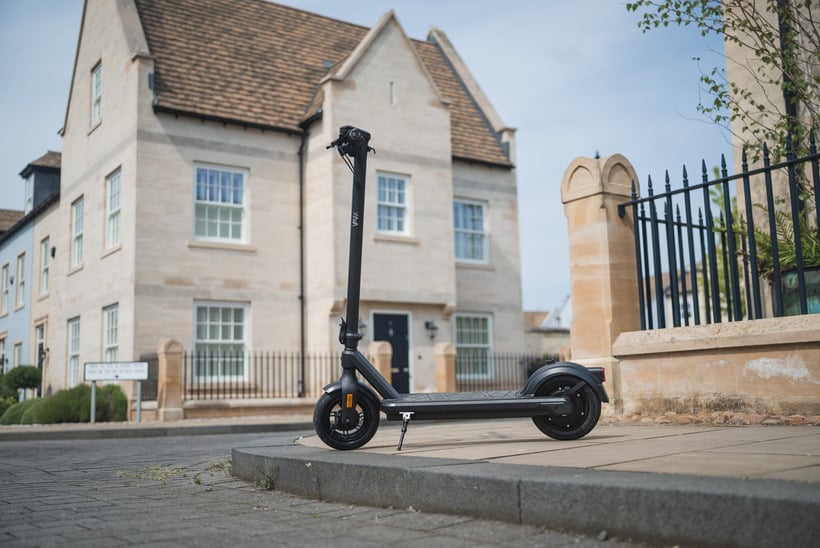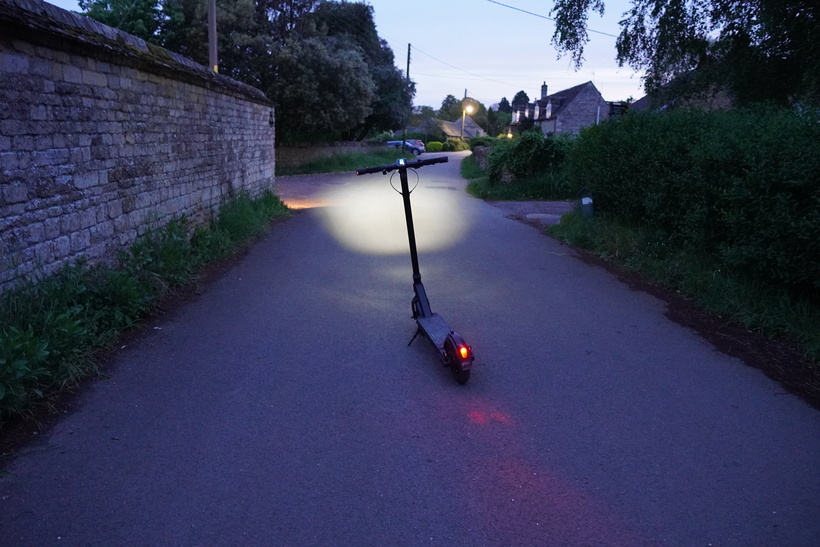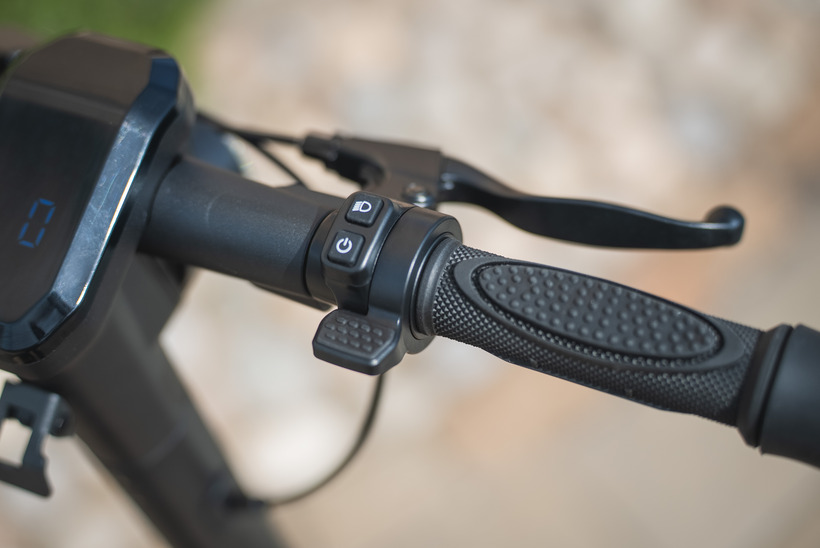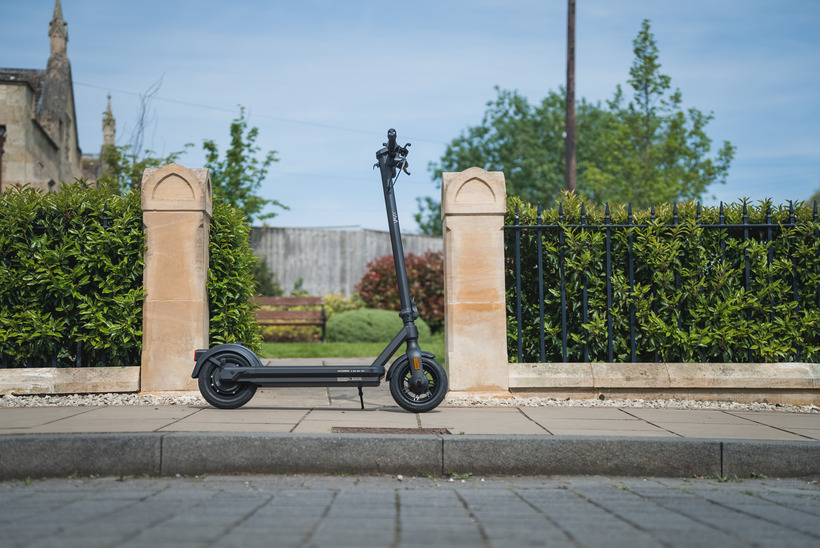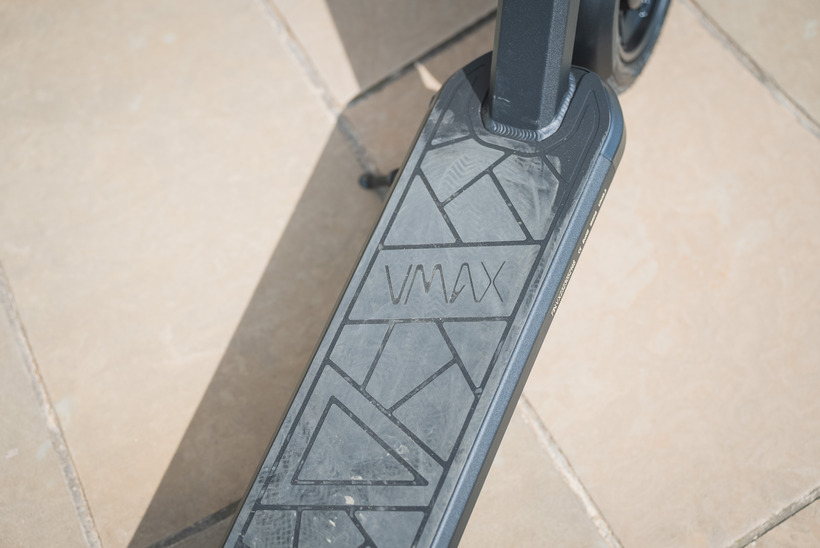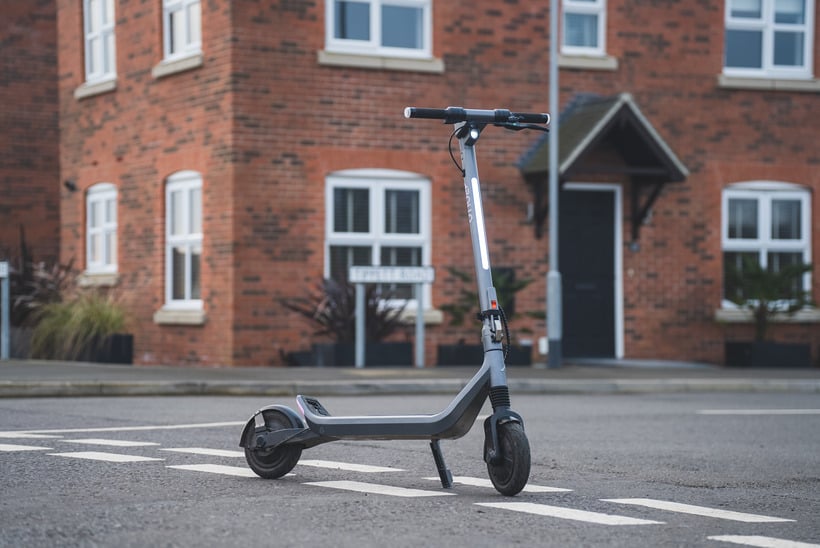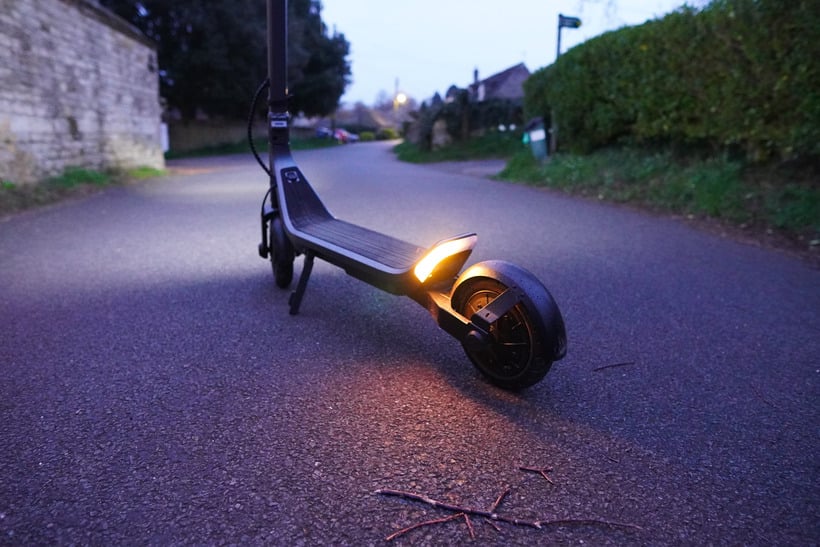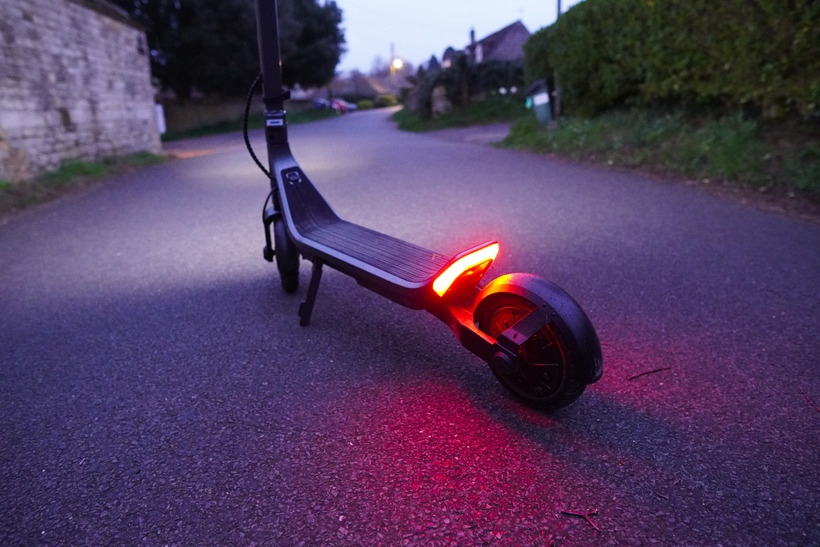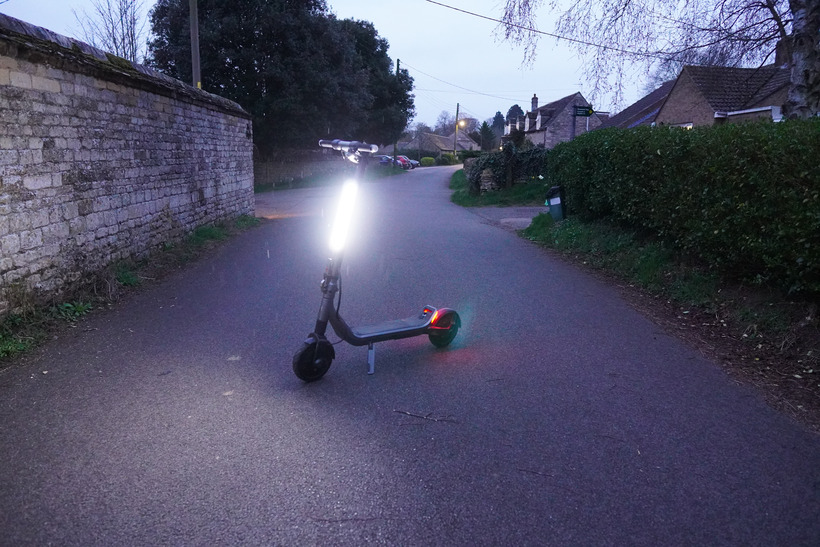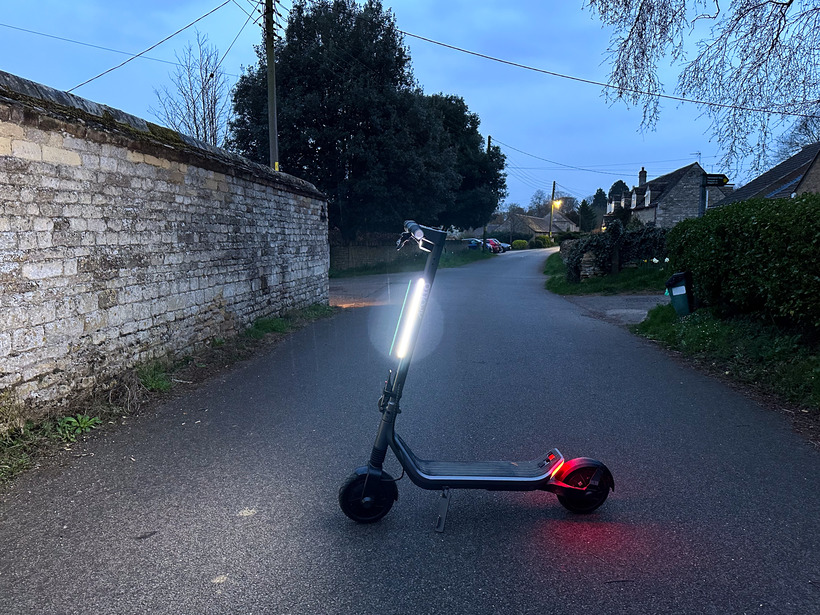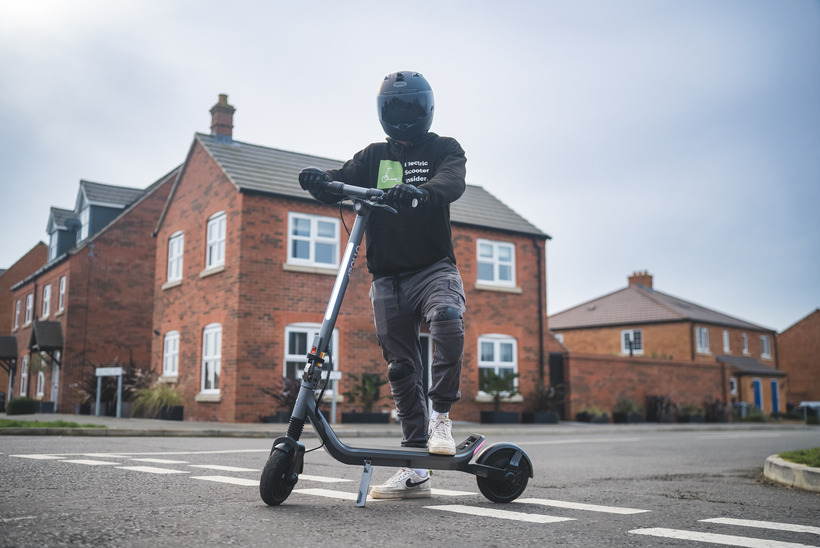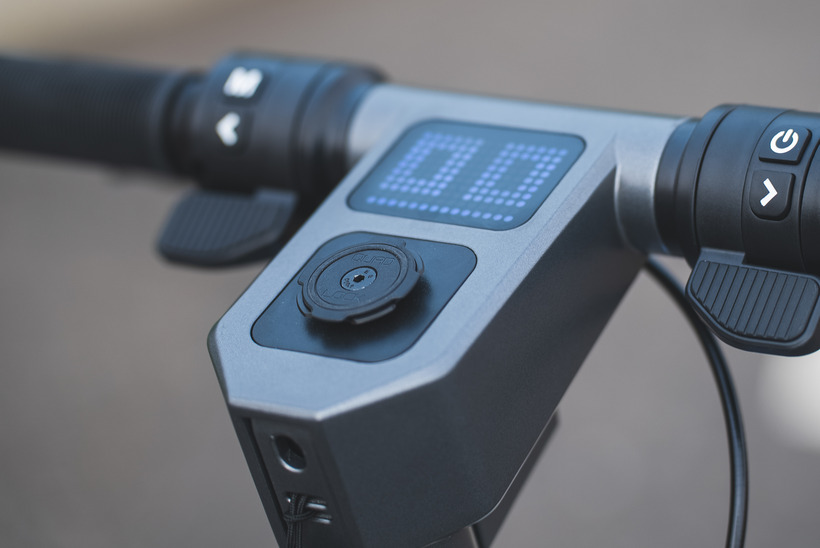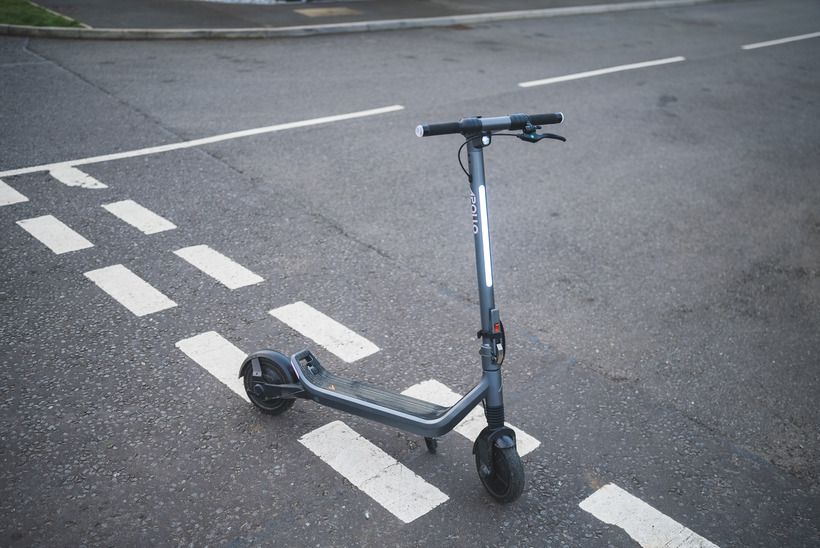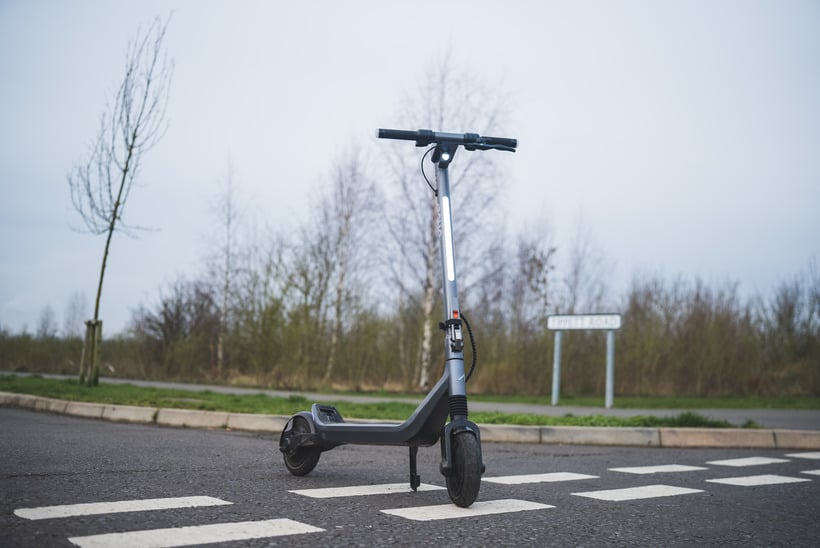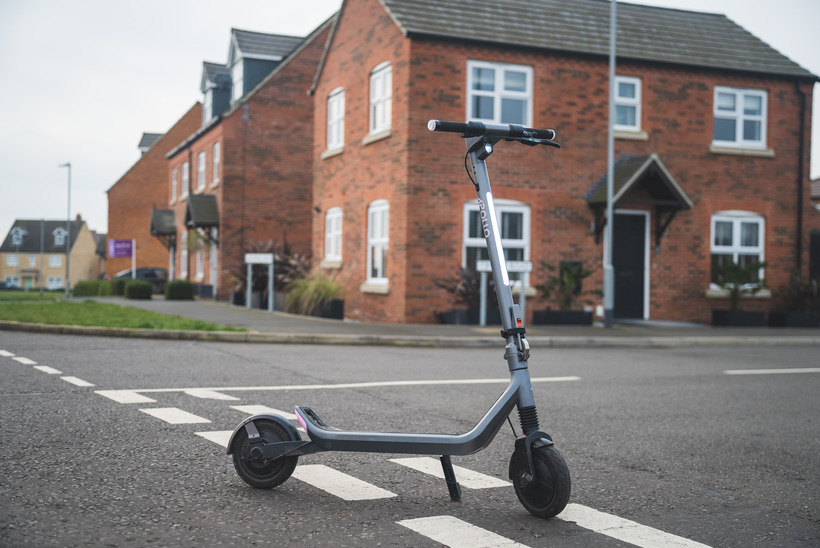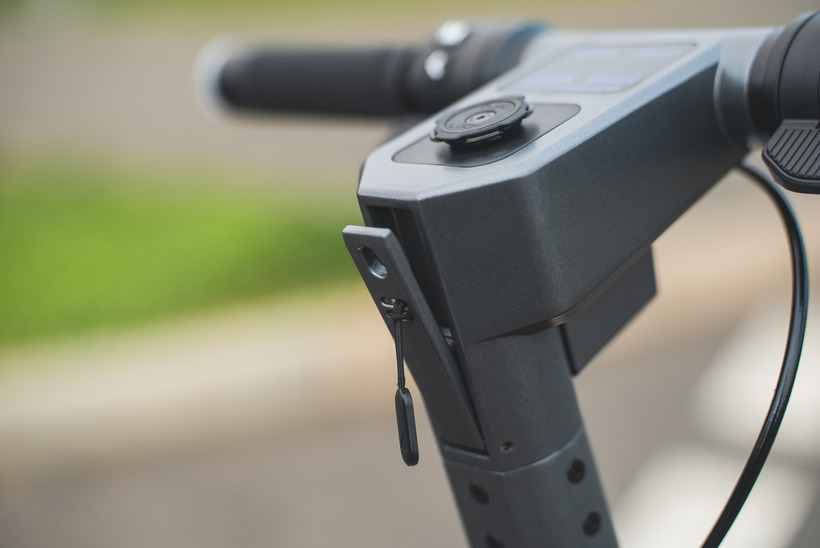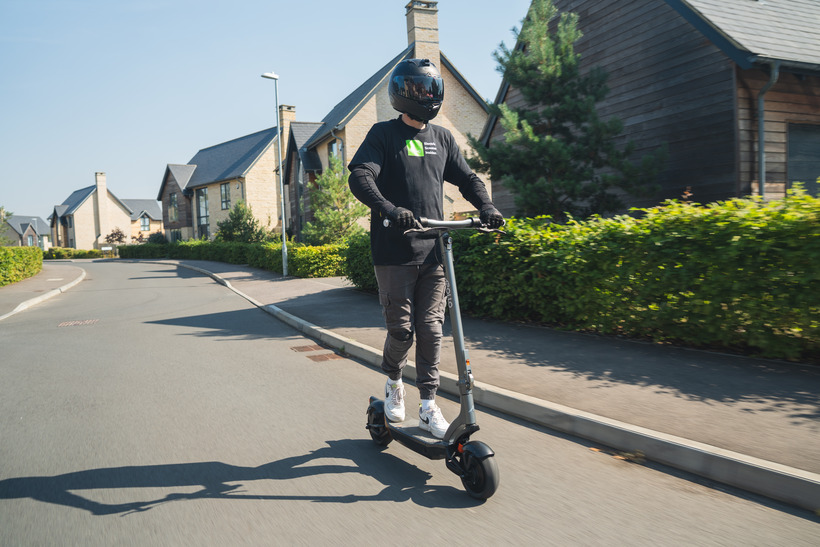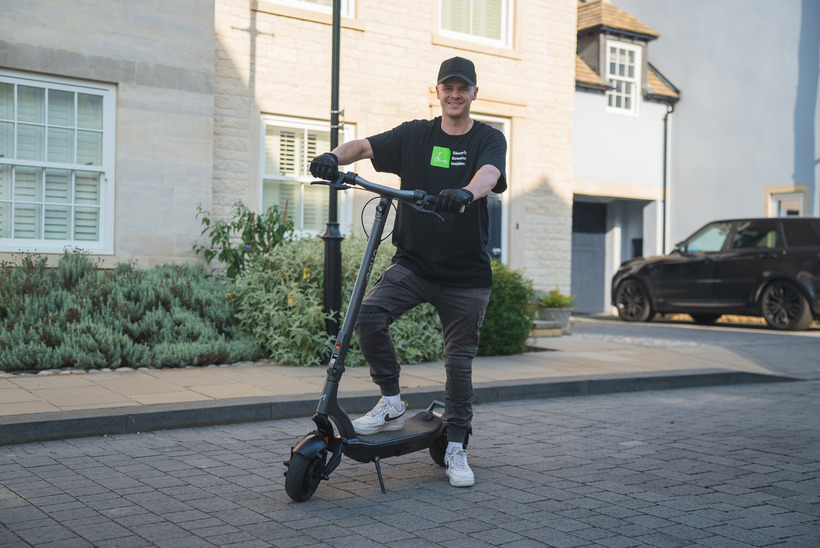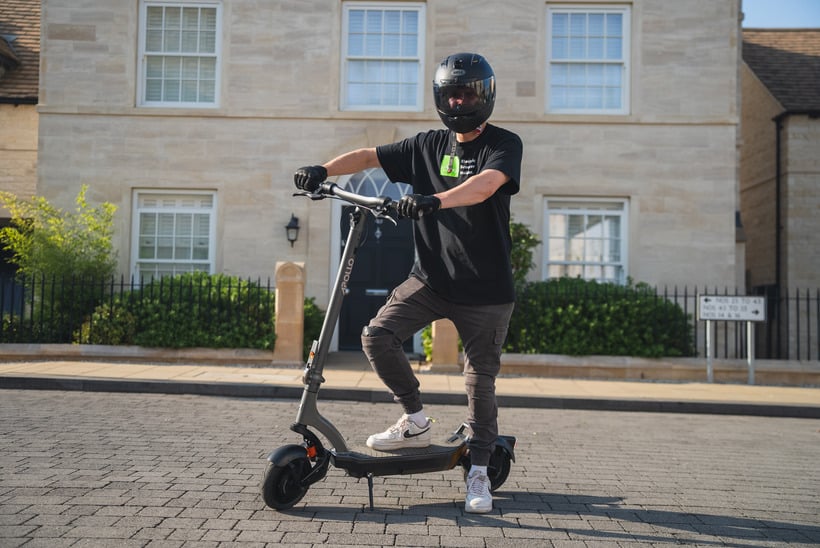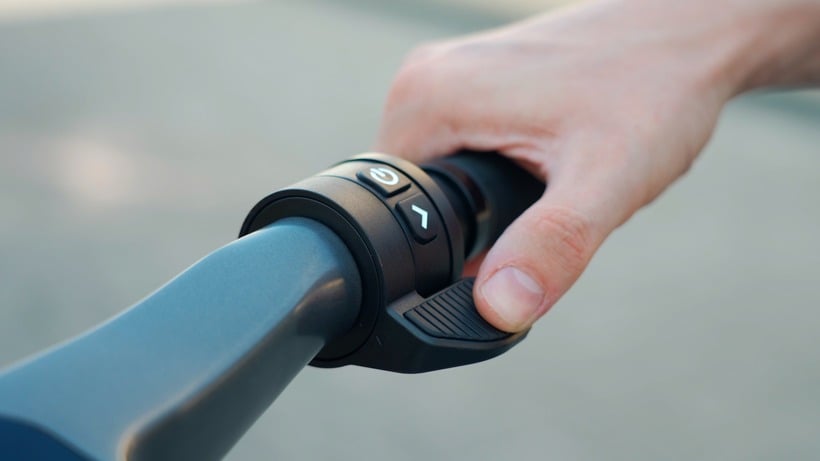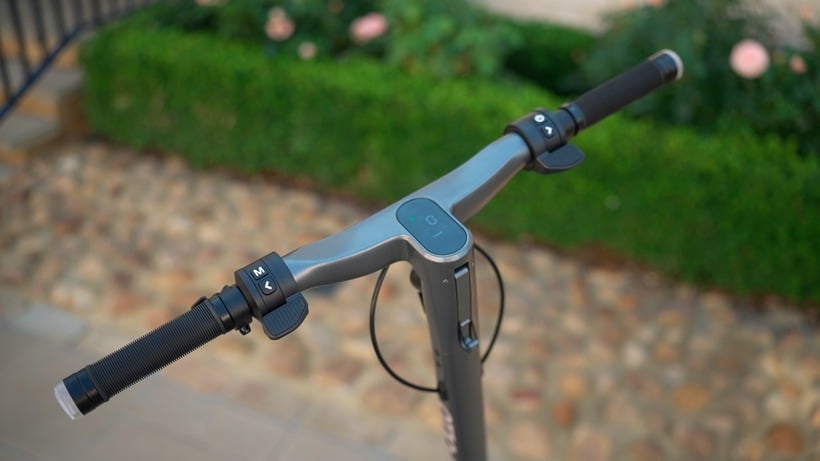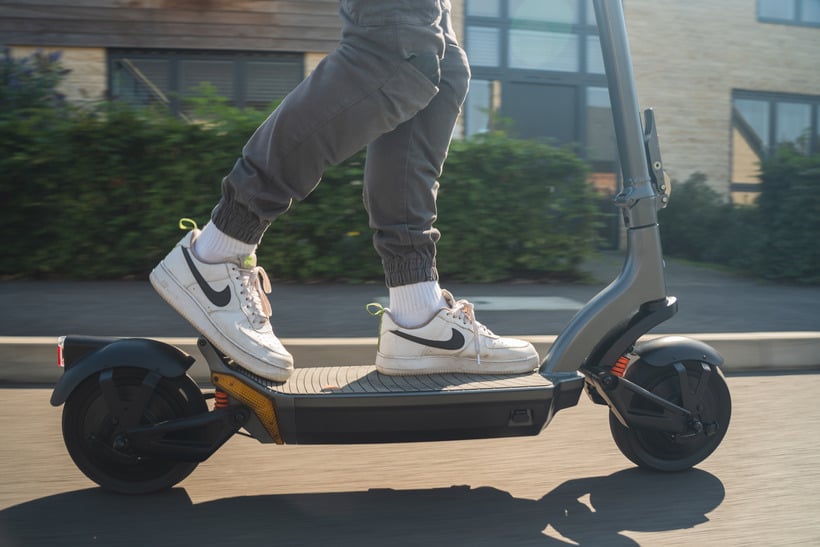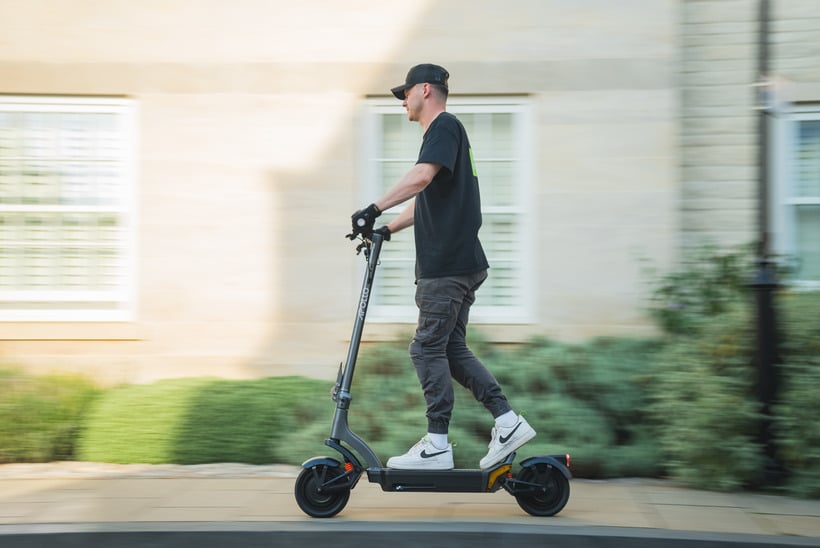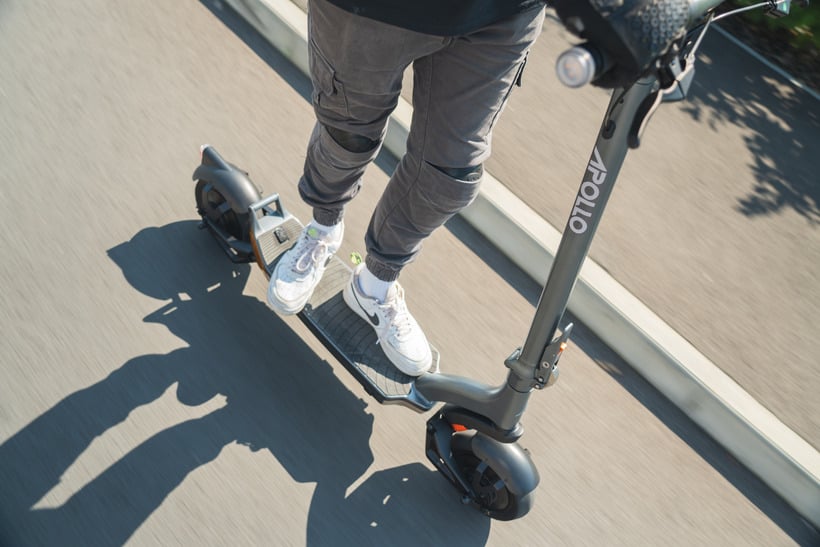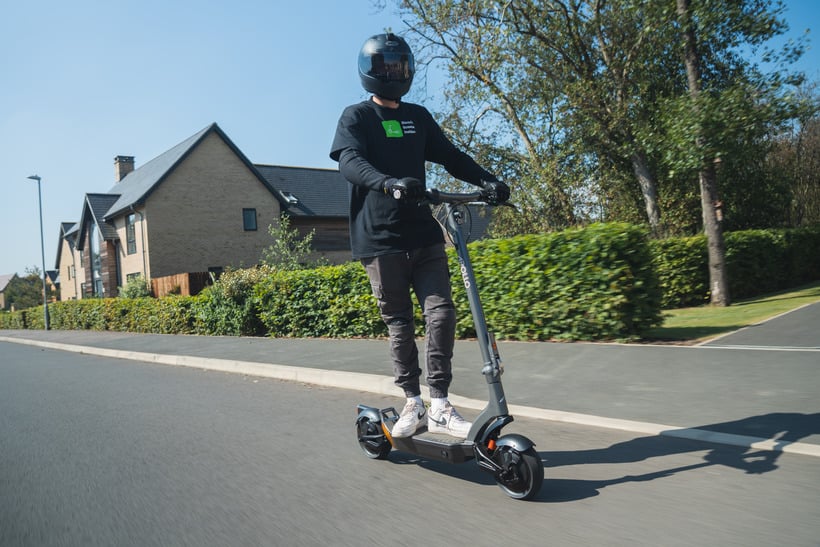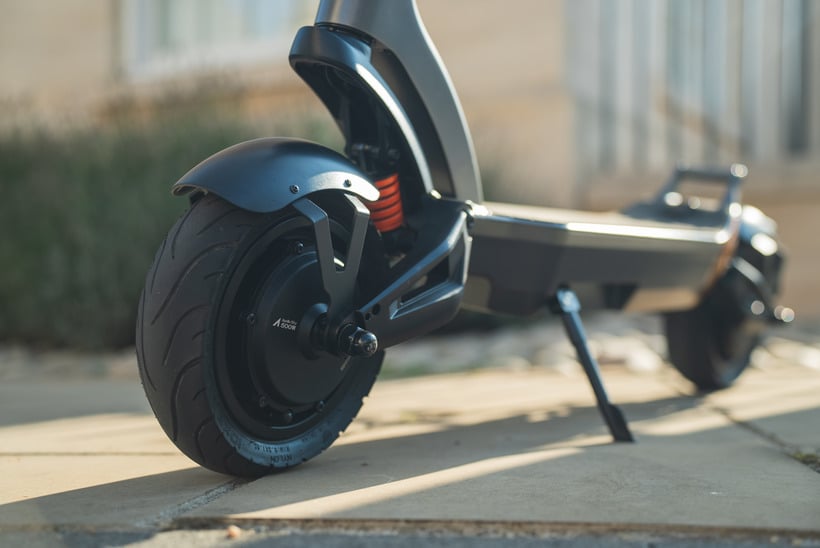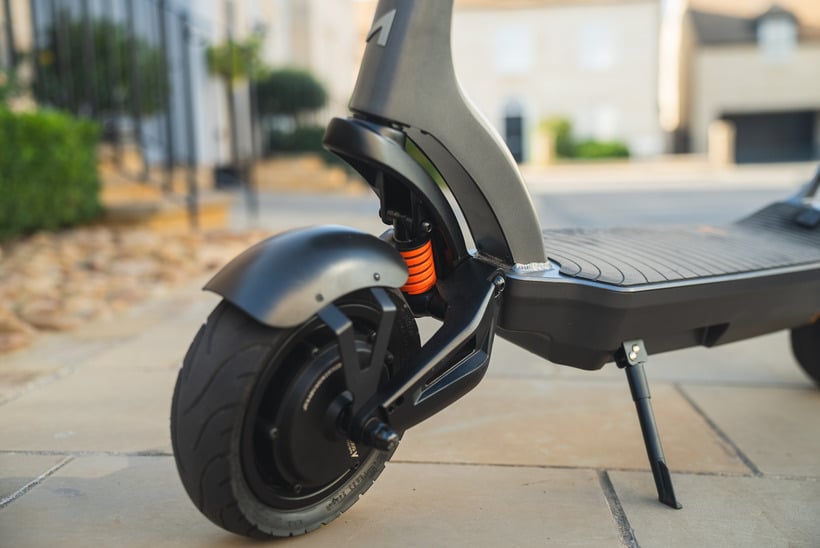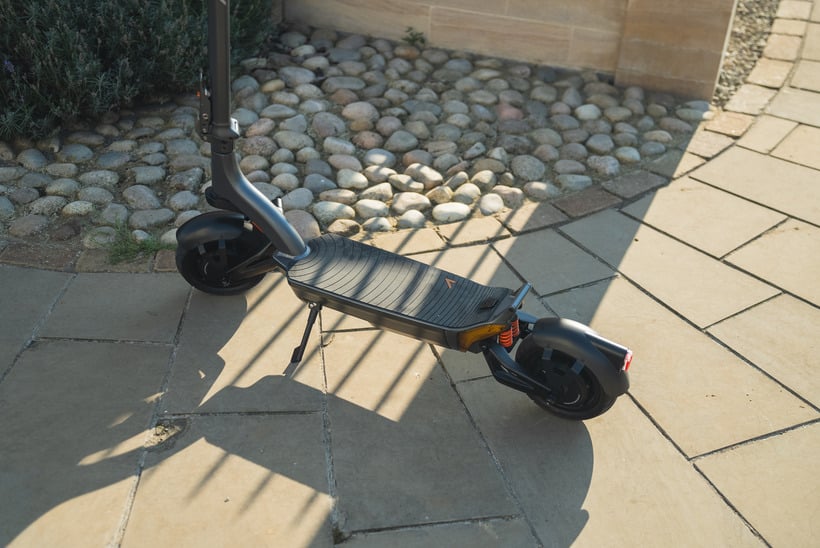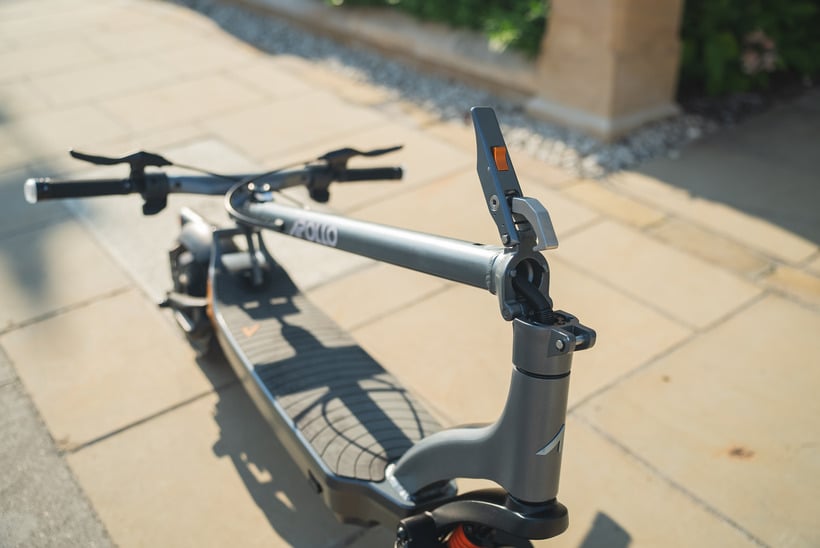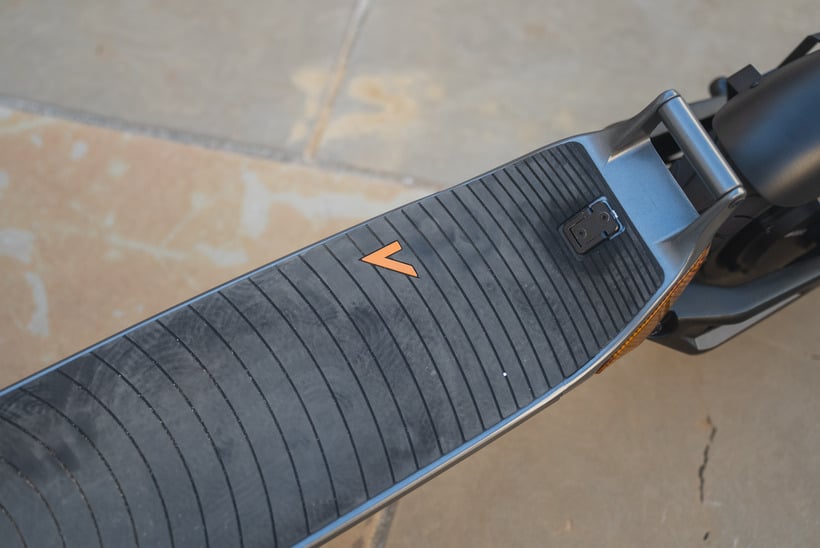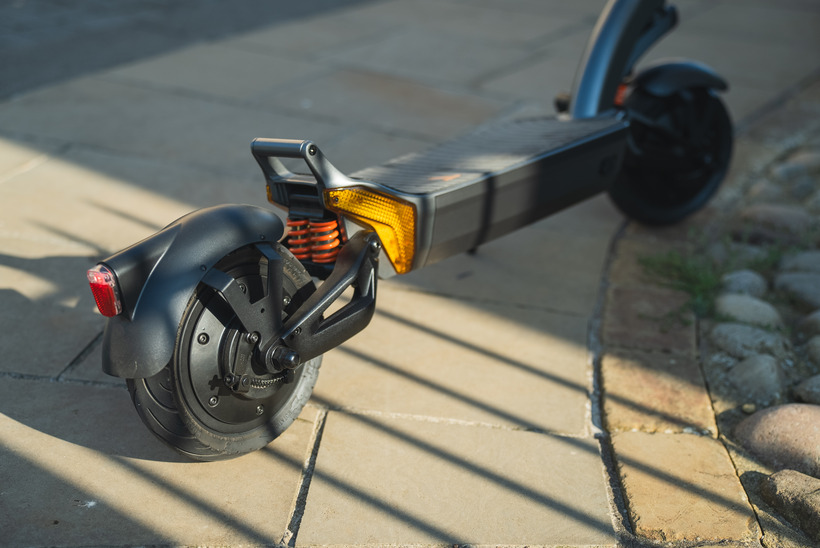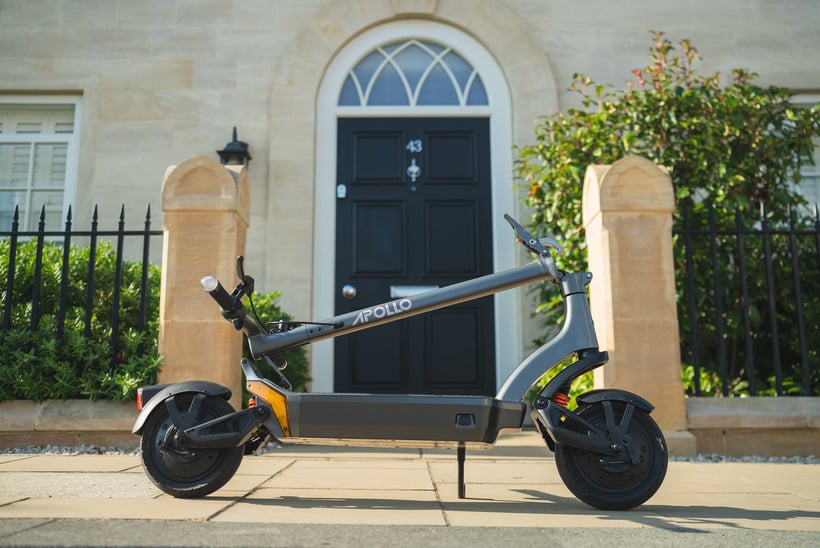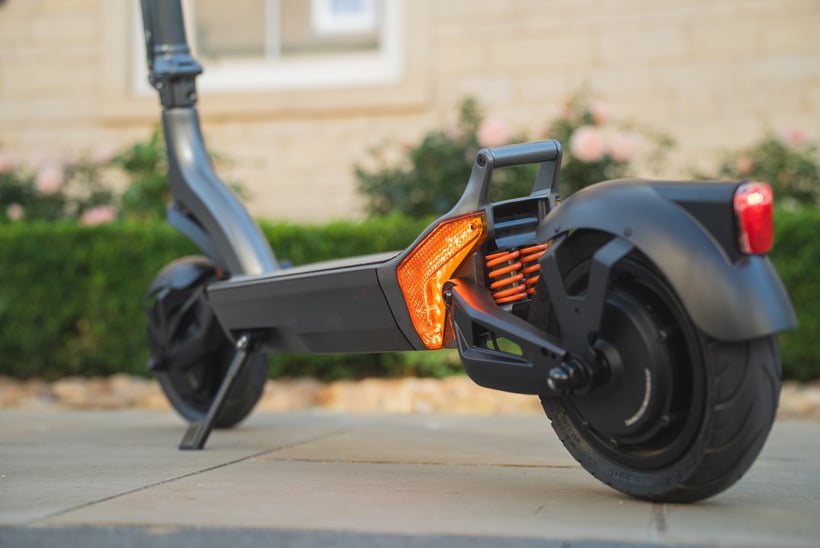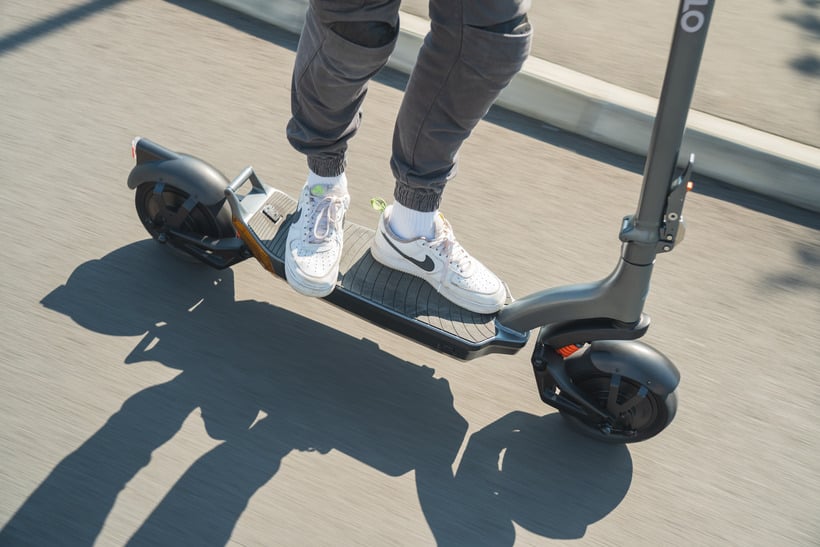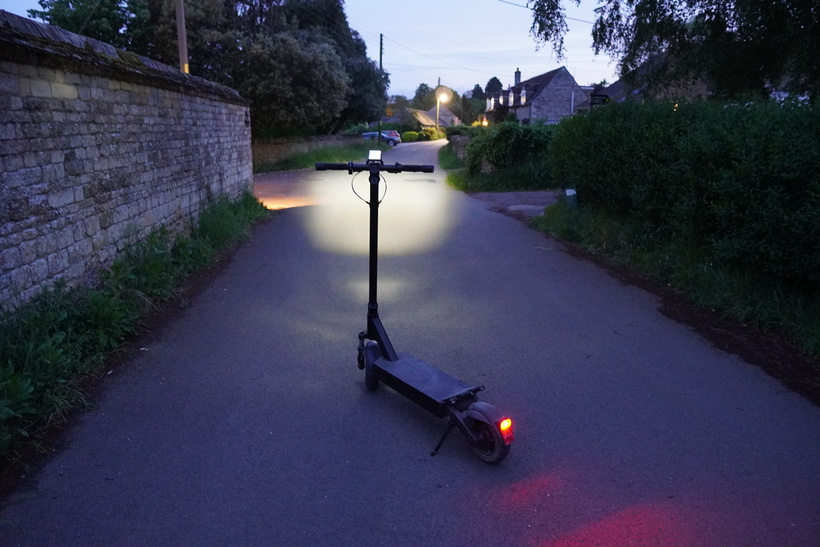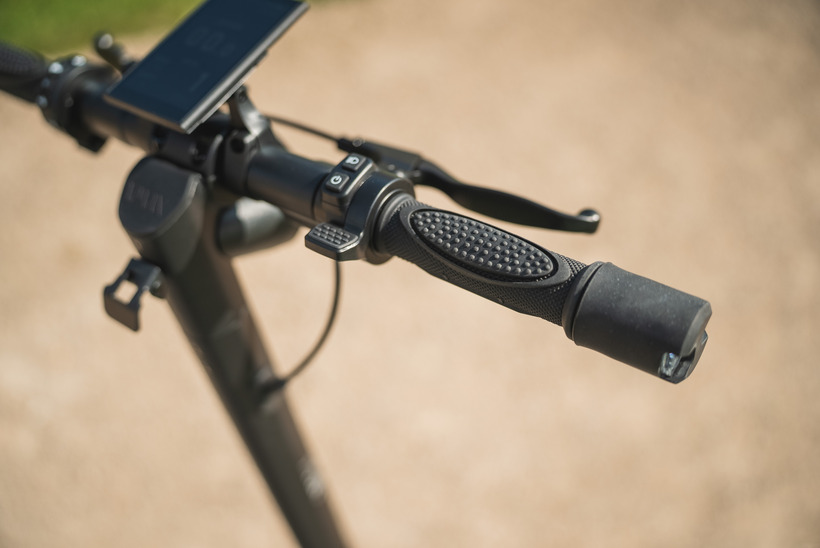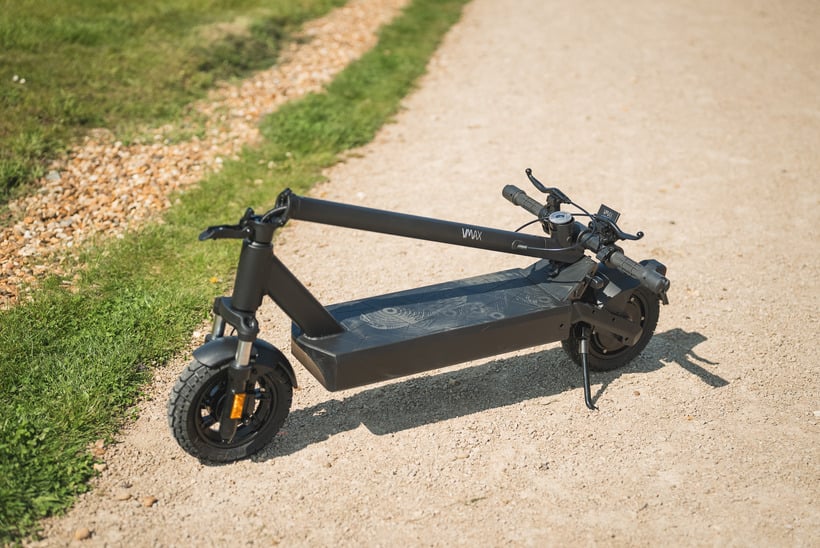Top Picks & Comparison: Best Electric Scooters For Commuting (Quick List)
Quick List: Best Electric Scooters For Commuting
I tested 36 electric commuter scooters to find the 5 best models.
- VMAX VX5 Pro GT – Best Budget & Most Portable
- VMAX VX2 Pro GT – Best Long Range
- Apollo Go – Best Features
- Apollo City – Best Ride Quality & Fastest
- VMAX VX4 GT – Most Versatile
Best Electric Scooters For Commuting
Best Budget & Most Portable

VMAX VX5 Pro GT
Performance Report
Performance Report:
Tester: Josh Frisby (197 lbs, 6.1 ft)
- Top Speed: 18 mph
- Real Speed: 17.4 mph*
- 0-15 mph: 6.7 s*
- Max Range: 22 miles
- Real Range: 19 miles*
- Braking: 2.0 meters*
- Suspension: n/a
- Max Incline: 14 degrees
- Optimal Incline: 8 degrees*
- Weight: 36.8 lbs
- Load: 265 lbs
Pros & Cons
The Good:
- Competitive performance profile
- 11% faster acceleration compared to the average of its rivals
- Shortest stopping distance among its rivals
- Best design and build in its price class
- Wider than normal handlebars promote good handling
- Regenerative braking system recycles kinetic energy to recharge the battery on the go
- High quality UL2272-certified battery
- Grippy and nimble 8.5-inch tubed tires
- Immaculate cable management
- Mobile app allows for customized performance
- Slick folding mechanism
- 40.2-inch deck-to-handlebar height makes it suitable for tall riders up to 6’3”
- Protective IPX6 water-resistance rating
- Long fenders that prevent splashback
- Quiet motor
- Low maintenance
- 2-year warranty
The Bad:
- Display gets washed out in direct light
- The taillight is bright at night, but it doesn’t flash when you brake - it just glows a brighter red
Video Review
Best Long Range

VMAX VX2 Pro GT
Performance Report
Performance Report:
Tester: Josh Frisby (190 lbs, 6.1 ft)
- Top Speed: 24 mph
- Real Speed: 24.5 mph*
- 0-15 mph: 3.8 s*
- Max Range: 37 miles
- Real Range: 30.6 miles*
- Braking: 3.0 meters*
- Suspension: n/a
- Max Incline: 15 degrees
- Optimal Incline: 9 degrees*
- Weight: 45 lbs
- Load: 287 lbs
Pros & Cons
The Good:
- Longest tested range in the sub-$1,000 class
- Fastest acceleration among similarly priced single-motor scooters
- Strong brakes that use a regenerative system to recycle kinetic energy to recharge the battery on the go
- Exceptionally quiet motor
- Impeccable build quality
- Nimble tubeless tires
- Suitable for tall and heavy riders
- Bright lights with excellent turn signals that are visible from the front, rear, and sides
- Mobile app allows for customized performance
- Slick folding mechanism
- Tidy cable management
- Protective IPX6 water-resistance rating
- Long fenders that prevent splashback
- Low maintenance
- 2-year warranty
The Bad:
- Doesn’t have suspension
- Display gets washed out in direct light
- The taillight is bright at night, but it doesn’t flash when you brake - it just glows a brighter red
Video Review
Best Features

Apollo Go
Performance Report
Performance Report:
Tester: Josh Frisby (197 lbs, 6.1 ft)
- Top Speed: 28 mph
- Real Speed: 25.5 mph*
- 0-15 mph: 3.8 s*
- Max Range: 30 miles
- Real Range: 17.6 miles*
- Braking: 3.1 meters*
- Suspension: 6/10*
- Max Incline: 25 degrees
- Optimal Incline: 12 degrees*
- Weight: 46 lbs
- Load: 265 lbs
Pros & Cons
The Good:
- Ultra-sleek design
- Premium build quality
- Packed full of useful features
- Cybertruck-inspired lights
- Handlebar integrated turn signals
- Well-designed geometry delivers intuitive control and handling
- Best-in-class cockpit ergonomics
- DOT Matrix display is extremely bright and easy to read from any angle
- Comes with a free QuadLock phone case accessory (saving you $30)
- Integrated mobile app for customized performance
- Stable and nimble thanks to its 14-degree rake angle
- Reliable self-healing tires
- A regenerative braking system recycles kinetic energy to recharge the battery by up to 10%
- A 40-inch deck-to-handlebar height and 265 lb load-bearing capacity make it well-suited to tall and heavy riders
- Impeccable cable management
- Extremely low maintenance
- Battery management system ensures long-term health
- Protective IP66 water-resistance rating
The Bad:
- The plastic caps that encapsulate the turn signals are prone to damage
- The taillight is dim during the day
- The clip-in, clip-out folding hook system is a little fiddly
- The handlebars are slightly narrow
Video Review
Photos
Best Ride Quality & Fastest

Apollo City Pro
Performance Report
Performance Report:
Tester: Josh Frisby (190 lbs, 6.1 ft)
- Top Speed: 32 mph
- Real Speed: 31.2 mph*
- 0-15 mph: 2.3 s*
- 0-25 mph: 6.1 s*
- Max Range: 43 miles
- Real Range: 27 miles*
- Braking: 2.1 meters*
- Suspension: 7.5/10*
- Max Incline: 20 degrees
- Optimal Incline: 13 degrees*
- Weight: 65 lbs
- Load: 265 lbs
Pros & Cons
The Good:
- Competitive performance profile
- Fast acceleration
- Smooth power delivery
- Sublime handling
- Sleek aesthetic
- Feature-rich
- Proprietary design ensures top-class build quality
- Tubeless, self-healing tires
- Shock-absorbing triple spring suspension
- Regen brake recharges the battery by up to 10%
- Intuitive folding mechanism
- Good lighting setup with the best turn signals that I’ve tested
- Battery management system ensures long-term performance
- Integrated mobile app for customized performance
- Fast charging
- 10,000 km warranty
- Low maintenance
- Suitable for tall and heavy riders
- High IP66 water-resistance rating
The Bad:
- The display could be brighter
- Similarly priced models go faster, but the Apollo City Pro’s overall package is superior
Video Review
Photos
Most Versatile

VMAX VX4 GT
Performance Report
Performance Report:
Tester: Josh Frisby (197 lbs, 6.1 ft)
- Top Speed: 25 mph
- Real Speed: 25.8 mph*
- 0-15 mph: 3.2 s*
- 0-25 mph: 9.6 s*
- Max Range: 62 miles
- Real Range: 36.7 miles*
- Braking: 3.4 meters*
- Suspension: 6.5/10*
- Max Incline: 18 degrees
- Optimal Incline: 11 degrees*
- Weight: 63.9 lbs
- Load: 330 lbs
Pros & Cons
The Good:
- Long real-world tested range
- Zippy acceleration
- Quiet motor
- Smooth front and rear suspension
- Versatile hybrid tubeless tires
- Great handling
- Excellent build quality
- Regenerative braking system that recycles kinetic energy to recharge the battery on the go
- Immaculate cable management
- Spacious dimensions
- Suitable for tall and heavy riders (up to 6’4” and 330 lbs)
- Bright turn signals ensure 360-degree visibility
- Display remains visible under direct sunlight
- Long fenders prevent splashback
- Protective IPX6 water-resistance rating
- Low maintenance
- 2-year warranty
The Bad:
- While the folding lever is simple to operate, the same can’t be said for how the latch on the back of the handlebars hooks to the kickplate. It’s difficult to connect the two, and they have a habit of becoming unhooked. This makes the scooter cumbersome to maneuver when folded
- Installing the handlebars is fiddly - there was a lot of extra slack in the thick wires and a very narrow hole to stick them through
- The button pad to control the settings, turn signals, and riding modes is well positioned but would benefit from a more responsive design - with gloves on it was hard to tell if I had pressed the turn signal or riding mode button
- The taillight is bright at night, but it doesn’t flash when you brake - it just glows a brighter red
Video Review
Compare Electric Commuter Scooters
VMAX VX5 Pro | VMAX VX2 Pro | Apollo Go | Apollo City | VMAX VX4 |
|
|---|---|---|---|---|---|
| Where to Buy | VMAX | VMAX | Apollo | Apollo | VMAX |
| Price | $499 | $899 | $1,099 | $1,649 | $1,449 |
| Type | Best Budget & Most Portable | Best Long Range | Best Features | Best Ride Quality & Fastest | Most Versatile |
| Review | Review | Review | Review | Review | Review |
| Performance | |||||
| Top Speed | 17.4 mph | 24.5 mph | 25.5 mph | 31.2 mph | 25.8 mph |
| 0-15 MPH | 6.7 s | 3.8 s | 3.8 s | 2.3 s | 3.2 s |
| 0-25 MPH | n/a | n/a | n/a | 6.1 s | 9.6 s |
| Max Range | 22 miles | 37 miles | 30 miles | 43 miles | 62 miles |
| Tested Range | 19 miles | 30.6 miles | 17.6 miles | 27 miles | 36.7 miles |
| Braking | 2.0 meters | 3.0 meters | 3.1 meters | 2.1 meters | 3.4 meters |
| Shock Absorp. | n/a | n/a | 6/10 | 7.5/10 | 6.5/10 |
| Max Incline | 14 degrees | 15 degrees | 25 degrees | 20 degrees | 18 degrees |
| Optimal Incline | 8 degrees | 9 degrees | 12 degrees | 13 degrees | 11 degrees |
| Specs | |||||
| Motor | 36V 400W | 48V 500W | 36V 350W (x2) | 48V 500W (x2) | 48V 500W |
| Throttle | Thumb | Thumb | Thumb | Thumb | Thumb |
| Battery | 36V 10.4Ah FST | 48V 16Ah FST | 36V 15Ah FST | 48V 20Ah FST | 48V 23.2Ah FST |
| Charge Time | 5 hours | 8.5 hours | 7.5 hours | 4.5 hours | 12 hours |
| Brakes | Drum, Regen | Drum, Regen | Drum, Regen | Drums (x2), Regen | Drum, Regen |
| Suspension | None | None | Spring, Rubber Block | Triple Springs, Swingarms | Hydraulic Fork, Rubber Block, Swingarms |
| Tire Size | 9 inch | 10 inch | 9 inch | 10 inch | 10 inch |
| Tire Type | Air (Tubeless) | Air (Tubeless) | Air (Tubeless, Self-Healing) | Air (Tubeless, Self-Healing) | Air (Tubeless) |
| Weight | 36.8 lbs | 45 lbs | 46 lbs | 65 lbs | 63.9 lbs |
| Load | 265 lbs | 287 lbs | 265 lbs | 265 lbs | 330 lbs |
| Foldability | Folds at Stem | Folds at Stem | Folds at Stem | Folds at Stem | Folds at Stem |
| Lights | Headlight, Taillight, Turn Signals | Headlight, Taillight, Turn Signals | Headlight, Taillight, Turn Signals | Headlight, Taillight, Turn Signals | Headlight, Taillight, Turn Signals |
| IP Rating | IPX6 | IPX6 | IP66 | IP66 | IPX6 |
| Terrain | Street | Street | Street | Street | Street, Off-Road |
How Did I Test the Scooters?
Test Criteria
To find the 5 best electric scooters for commuting, I put 36 models to the test. Each was assessed on its speed, range, charge time, comfort, maneuverability, weight, portability, IP rating, durability, and safety. I also took into account value for money.
Top Speed & Acceleration
While commuters aren’t necessarily looking for a racer, having a bit of zip at your disposal is a welcome perk. To account for this, I tested each scooter's pace by measuring their top speed and acceleration.
My tests were conducted on a flat, dry road and used high-precision data loggers to record performance. To guarantee that each scooter could reach its full potential, the performance settings were maxed out, the tires were pumped up to their recommended PSI, and the batteries were fully charged.
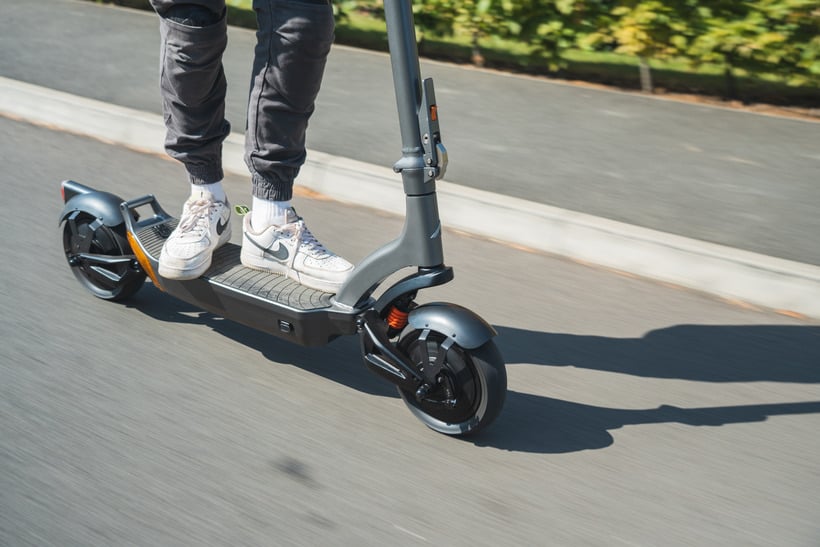
Do bear in mind that I’m 6.1 ft and weigh 190 lbs – the results may vary depending on your profile.
Range
This is key for a commuter scooter. You want a model that can get you from A to B (and back again) with minimal fuss, so the assessments that I carried out here were crucial.
While manufacturers list maximum range (i.e. the distance that a scooter can travel under best-case riding conditions – including a 165 lb rider, flat terrain, and riding in the slowest setting), I provided an insight on how each scooter performs under real-world conditions.

While testing the scooters, I made sure to include periods of fast acceleration, cruising, and multiple stops to reflect realistic conditions.
Real-world performance typically equates to 60% of the maximum.
Charge Time
Long commutes can be draining on your battery, so a fast recharge time (within reason) is preferred.
To assess how long this takes, I considered the manufacturer’s specs, alongside my calculations where I divided each battery’s amp hours (Ah) by the amperage (A) of the included charger.
Expert Tip: If you opt for a scooter that has a battery over 15Ah then you may want to purchase a fast charger, which will reduce the charge time significantly.

Electric Scooter Chargers: How to Charge, Expert Tips & Fast Chargers
Comfort
Ensuring comfort on your commute is fundamental to the appeal of a scooter. To assess this, I combined both quantitative and qualitative data.
The former consisted of measurements across each scooter’s frame to determine how the dimensions impact their suitability for different riders. These included measurements of the kickplate angle, handlebar width, deck-to-handlebar height, and deck size.
The qualitative data, meanwhile, involved the assessment of each scooter’s ergonomics, shock absorption, and handling.

Maneuverability
Navigating busy city streets demands a nimble scooter. Here, I tested each model on smooth and pot-holed roads, focusing on how they handled and how power was shifted through the throttle.
The geometry of each scooter – including its rake angle and dimensions – as well as weight distribution, all fall under the spotlight, too, since they play key roles in stability and control.

Weight & Portability
Perhaps one of the most important qualities of a commuter scooter is its ability to be folded. Here, I tested each scooter’s folding mechanisms and weight to assess how easy they were to collapse and whether they could be picked up and carried. I also made sure to review how compact each scooter was by assessing its folded length, width, and height.
I then tested the rigidity of each mechanism to make sure that they didn’t cause any unwanted wobbles (for example, some stem clamps can loosen and cause the steering column to rock back and forth).

IP Rating
Based on my independent research of over 140 electric scooters, 78% of models are equipped with water resistance ratings. This figure is up from 74% in 2022, and 40% in 2021. However, it’s important to note that these ratings vary in the level of protection that they provide.
To assess the veracity of each scooter’s wet weather credentials, I reported on their ability to protect against water ingress.

Durability
Chances are that you’ll be riding your scooter every day, so you want to be sure that it can stand up to such rigors. The extensive testing that I conduct on every model allows me to establish a view of their long-term reliability.
I also paid particular attention to indicators of quality that ensure low maintenance, including different types of tires (i.e. solid or self-healing), the rigidity of the scooter as a whole, and the management systems used to govern the batteries.

Safety
Safety is paramount when it comes to riding an electric scooter in environments with heavy traffic and pedestrians. Your brakes need to be up to scratch.
To test braking performance, I used a measuring tape to record the stopping distance from 15 mph on a dry, smooth road. If electronic or regenerative braking was present, then I set it to the maximum strength. As a rule of thumb, anything under 3.5 meters is considered good.
But safety isn’t all about the brakes; lighting is also important when commuting after dark. I tested this in two ways: first, I compared lumen count of each scooter; second, I rode them at night to assess the brightness of their lights. During my tests, I assessed how much of the path ahead was illuminated, with the shape, direction, and size of the beam all important.
I also considered how visible the rest of the lighting rig was to other road users (i.e. turn signals, taillights, and deck LEDs – where possible).

How I Test Braking Performance
How I Test Electric Scooter Lights








